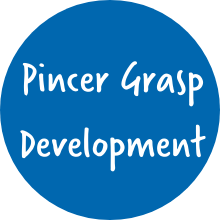Get Glowing with STEM Ice Lanterns
- Learning Resources Posted On Dec 14, 2022 | STEM
Your holiday guests will be delighted as they arrive to your doorstep on a cold night greeted by these frosty, glowing lanterns. Oh what fun it will be when they learn your little scientists created the evening’s entryway décor!
It goes without saying that these lanterns work best in freezing temperatures. Should you choose to use them to light your holiday table, make sure to place them in a bowl for when they begin to melt!
This experiment involves the change of matter from a liquid to a solid (and eventually back to a liquid).
You will need:
• Plastic red cups
• Smaller plastic cups that can fit inside
• Decorations - glitter pipe cleaners, craft pom poms, glitter, pine sprigs, etc.
• Water
• Tape
• Food coloring
• Candles (battery-operated is probably best)






Grab one of your red cups, and twist pipe cleaners up the length of the cup. This part requires some engineering inspiration and small hands. How do you get them to stay up? If you choose, add some craft pom poms. Working on the pom poms to stay suspended in the pipe cleaners also creates a unique challenge. Think!
Next, pull out a long piece of tape and attach it to one side of the cup near the lip. The tape will be the important piece that will hold down the second cup, so it doesn’t float. Basically, have the tape ready before you pour in the water.










Fill the cup about half full with water. Add a few drops of food coloring if you would like at this time.
Place the smaller cup into the bigger, red cup. Pour your water in between the two cups, so it fills until about a half inch below the rim. You’ll want to push down on the smaller cup the entire time because the goal is to have the two rims even with each other.
Secure your second cup in place with the tape.
Place in the freezer overnight.
When you are ready to place your lanterns out for all to enjoy, remove them from the fridge and give yourself about 5 minutes. This is the perfect time to discuss the scientific changes you observe.
• The water is now frozen.
• The frozen water has pushed the small cup up.
• The frozen water has perhaps even changed the shape of the outer cup.








Remove the inner cup with a little tug and turn the red cup upside down to shake out the ice lantern. Time is not on your side handling the frozen lanterns, as they will melt quickly.
Showcase them with a battery-operated candle any place around the house where you’d like to wow your guests!
 Shop UK Site
Shop UK Site 



























